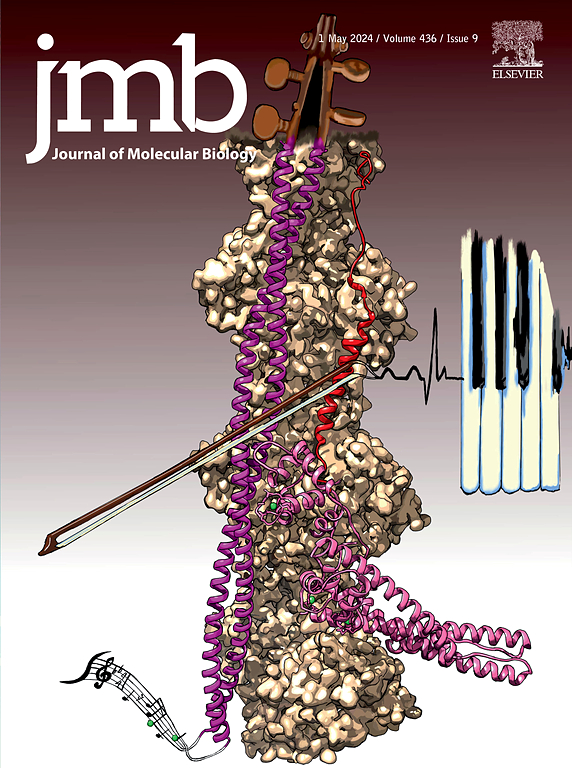DropFit: Determination of the Critical Concentration for Protein Liquid–Liquid Phase Separation
IF 4.5
2区 生物学
Q1 BIOCHEMISTRY & MOLECULAR BIOLOGY
引用次数: 0
Abstract
In the liquid–liquid phase separation of proteins, dense liquid droplets often form within the dilute phase below the critical concentration. The resulting size distribution of these precritical droplets can be described by a scale-invariant distribution, which is characterized by an increasing average as the concentration approaches from below the critical value. This phenomenon can be leveraged for the quantitative estimation of the critical concentration. Here, to facilitate applications of this approach, we present the DropFit web server (https://www-cohsoftware.ch.cam.ac.uk/index.php/dropfit). DropFit can be used to estimate the critical concentration using experimental data on the length, area, or volume of the precritical droplets, which are taken away from the critical concentration and thus be more accurate and reproducible. We anticipate that the accurate value of the critical concentration under different experimental conditions will help understand the contributions from different macromolecules to the formation of protein condensates, and to investigate the perturbations that lead to pathological processes through the disruption of membraneless organelles.

DropFit:测定蛋白质液-液分离临界浓度。
在蛋白质的液-液相分离中,在低于临界浓度的稀相内往往会形成致密的液滴。这些临界前液滴的大小分布可以用尺度不变分布来描述,其特征是随着浓度从临界值以下接近而增加平均值。这一现象可用于临界浓度的定量估计。在这里,为了方便这种方法的应用,我们介绍DropFit web服务器(https://www-cohsoftware.ch.cam.ac.uk/index.php/dropfit)。DropFit可以使用预临界液滴的长度、面积或体积的实验数据来估计临界浓度,这些预临界液滴远离临界浓度,因此更加准确和可重复性。我们期望不同实验条件下临界浓度的准确值将有助于了解不同大分子对蛋白质凝聚物形成的贡献,并通过无膜细胞器的破坏来研究导致病理过程的扰动。
本文章由计算机程序翻译,如有差异,请以英文原文为准。
求助全文
约1分钟内获得全文
求助全文
来源期刊

Journal of Molecular Biology
生物-生化与分子生物学
CiteScore
11.30
自引率
1.80%
发文量
412
审稿时长
28 days
期刊介绍:
Journal of Molecular Biology (JMB) provides high quality, comprehensive and broad coverage in all areas of molecular biology. The journal publishes original scientific research papers that provide mechanistic and functional insights and report a significant advance to the field. The journal encourages the submission of multidisciplinary studies that use complementary experimental and computational approaches to address challenging biological questions.
Research areas include but are not limited to: Biomolecular interactions, signaling networks, systems biology; Cell cycle, cell growth, cell differentiation; Cell death, autophagy; Cell signaling and regulation; Chemical biology; Computational biology, in combination with experimental studies; DNA replication, repair, and recombination; Development, regenerative biology, mechanistic and functional studies of stem cells; Epigenetics, chromatin structure and function; Gene expression; Membrane processes, cell surface proteins and cell-cell interactions; Methodological advances, both experimental and theoretical, including databases; Microbiology, virology, and interactions with the host or environment; Microbiota mechanistic and functional studies; Nuclear organization; Post-translational modifications, proteomics; Processing and function of biologically important macromolecules and complexes; Molecular basis of disease; RNA processing, structure and functions of non-coding RNAs, transcription; Sorting, spatiotemporal organization, trafficking; Structural biology; Synthetic biology; Translation, protein folding, chaperones, protein degradation and quality control.
 求助内容:
求助内容: 应助结果提醒方式:
应助结果提醒方式:


